-
What is Amazon EC2 AMI?
-
Why need to backup EC2 AMI?
-
How to create a backup of an Amazon EC2 instance as an AMI?
-
Easily manage EC2 instances with Vinchin Backup & Recovery
-
AWS backup EC2 AMI FAQs
-
Conclusion
In the era of digital transformation, the reliability and availability of cloud-based applications are critical for business continuity. AWS provides a powerful solution for creating and managing virtual server instances through Amazon EC2. A crucial aspect of managing these instances is ensuring they are backed up regularly, and one effective method to achieve this is through the use of AMIs.
What is Amazon EC2 AMI?
Amazon EC2 AMI (Amazon Machine Image) is a pre-configured virtual machine image that is used to create and launch instances on Amazon EC2. It serves as a template that contains information about the operating system, application server, software libraries, and other configurations required to run a server in the cloud.
When you launch an EC2 instance, you choose an AMI that best suits your needs. Amazon provides a variety of pre-built AMIs with different operating systems (such as Amazon Linux, Ubuntu, Microsoft Windows, and more), and you can also find AMIs from third-party vendors or create your own custom AMIs.
Key components of an AMI include:
1. Root Volume: The root volume contains the operating system and other essential files needed to boot the instance.
2. Block Device Mapping: Specifies the storage volumes (EBS volumes or instance store) attached to the instance and how they are configured.
3. Metadata: Additional data like a description, kernel and RAM disk IDs (if applicable), and user-data scripts that can be executed during instance launch to further customize the instance.
4. Security Groups: Defines the firewall rules for controlling network access to the instance.
Why need to backup EC2 AMI?
1. Disaster Recovery: Backups act as a critical component of any disaster recovery plan. Natural disasters, power outages, or large-scale service disruptions can impact your EC2 instances. Having off-instance backups in the form of AMIs and their associated snapshots ensures you can recover your infrastructure in another region or availability zone.
2. AMI as a Unique Deployment Template: AMIs encapsulate not just the operating system and pre-installed software but also the initial configuration state of an instance. Backing up specific AMIs means preserving a complete working environment or application deployment template, inclusive of security settings, network configurations, and custom scripts. Restoration, therefore, isn't merely data recovery but a full recreation of the environment.
3. Rapid Recovery and Elastic Scaling: Instances based on backed-up AMIs can be swiftly launched, critical for handling sudden traffic spikes, failovers, or testing new features. Without AMI backups, configuring a new instance from scratch with identical settings would be time-consuming and prone to errors.
4. Version Control and Iteration Management: In application development and maintenance, different versions of AMIs represent software stack configurations at specific points in time. Backing up these versioned AMIs enables teams to easily rollback to previously known good states or iterate upon past versions, enhancing development efficiency and quality control.
5. Leveraging AWS Features for Optimization: By utilizing AWS snapshot technology and lifecycle policies for AMI backups, users can automate the backup process, schedule frequencies, and automatically remove outdated backups to optimize storage costs and resource management. This is an efficient backup mechanism tailored for AWS EC2.
How to create a backup of an Amazon EC2 instance as an AMI?
Using AWS Management Console:
1. Sign in to the AWS Management Console and navigate to the EC2 service.
2. Select the Instance > click on the Actions button at the top of the instances list, then select Images and templates > Create image.
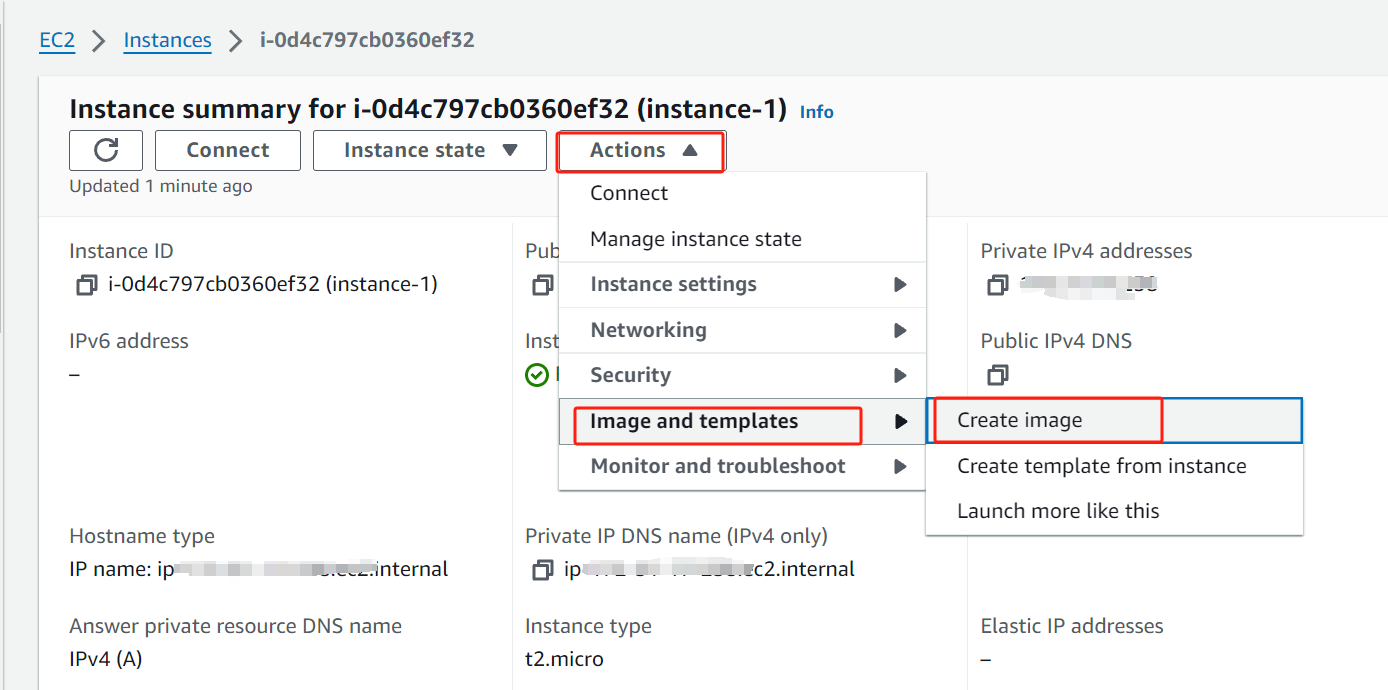
3. Configure the image: A dialog box will appear. Give your new AMI a descriptive name and add any relevant notes in the description field. You can also choose whether to include or exclude instance-specific data volumes in your backup.
4. Click on the Create image button. AWS will now create a snapshot of the root volume and any additional EBS volumes you’ve included, and use these to register a new AMI.
5. Monitor the process: You can monitor the progress of the image creation under the AMIs section in the EC2 console. Once the status changes to Available, your backup is complete.
Using AWS CLI:
Ensure you have the AWS CLI installed and configured with your AWS credentials.
1. Identify the instance ID of the EC2 instance you want to back up. You can list your instances with the following command:
aws ec2 describe-instances
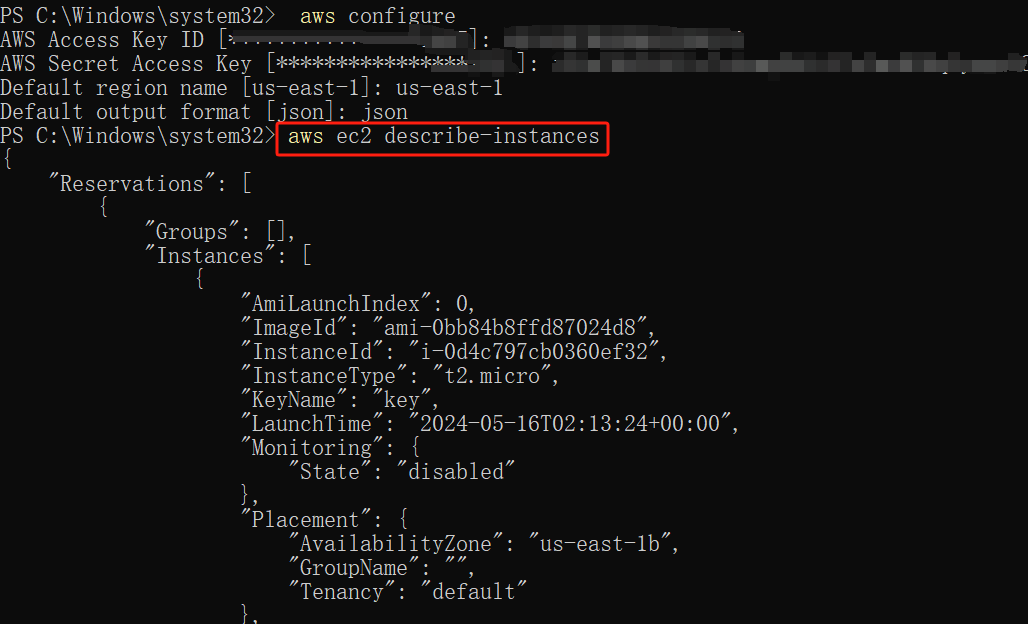
2. Use the aws ec2 create-image command to create an AMI from the specified instance. Replace “INSTANCE_ID” with your actual instance ID, and customize the “--name” and “--description” as needed.
aws ec2 create-image ` --instance-id i-0d4c797cb0360ef32 ` --name "MyBackup-1" ` --description "Backup of my EC2 instance created on $(Get-Date -Format yyyyMMdd_HHmmss)"

3. After running the command, you can check the status of your new AMI by listing your AMIs with the following command:
aws ec2 describe-images
It’s important to note that this process creates a point-in-time backup; for continuous data protection, consider additional strategies like EBS snapshots for data volumes or using AWS Backup service.
Easily manage EC2 instances with Vinchin Backup & Recovery
Vinchin Backup & Recovery is a comprehensive data protection solution designed to simplify and streamline the process of managing VM backups and recoveries for your virtualization environment including Amazon EC2 instances.
Vinchin Backup & Recovery offers a streamlined solution for managing EC2 backups across various AWS regions, supporting customizable strategies with full, incremental, and differential backup options. It facilitates flexible recovery including entire instances or specific files, with the ability to restore to different regions or even migrate to other virtualization platforms like VMware and Hyper-V. Integrating with Amazon S3 for cost-effective archival storage, Vinchin also simplifies infrastructure management through an intuitive UI, enabling efficient backup configuration and seamless V2V migrations, thus enhancing cloud data protection and business continuity.
To backup EC2 instance with Vinchin Backup & Recovery, follow these steps:
1. Select the EC2 instance to be backed up.
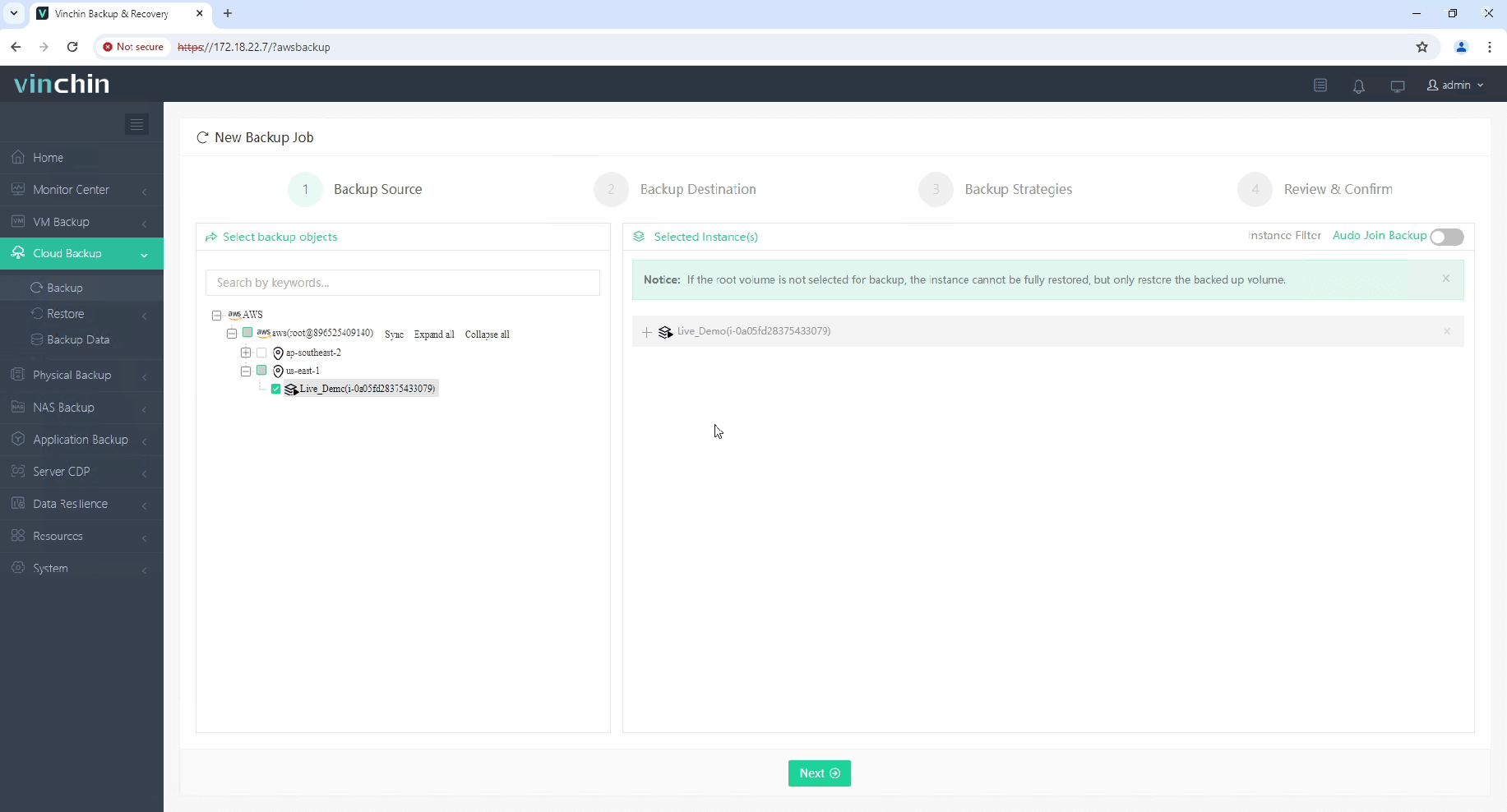
2. Select the backup destination.
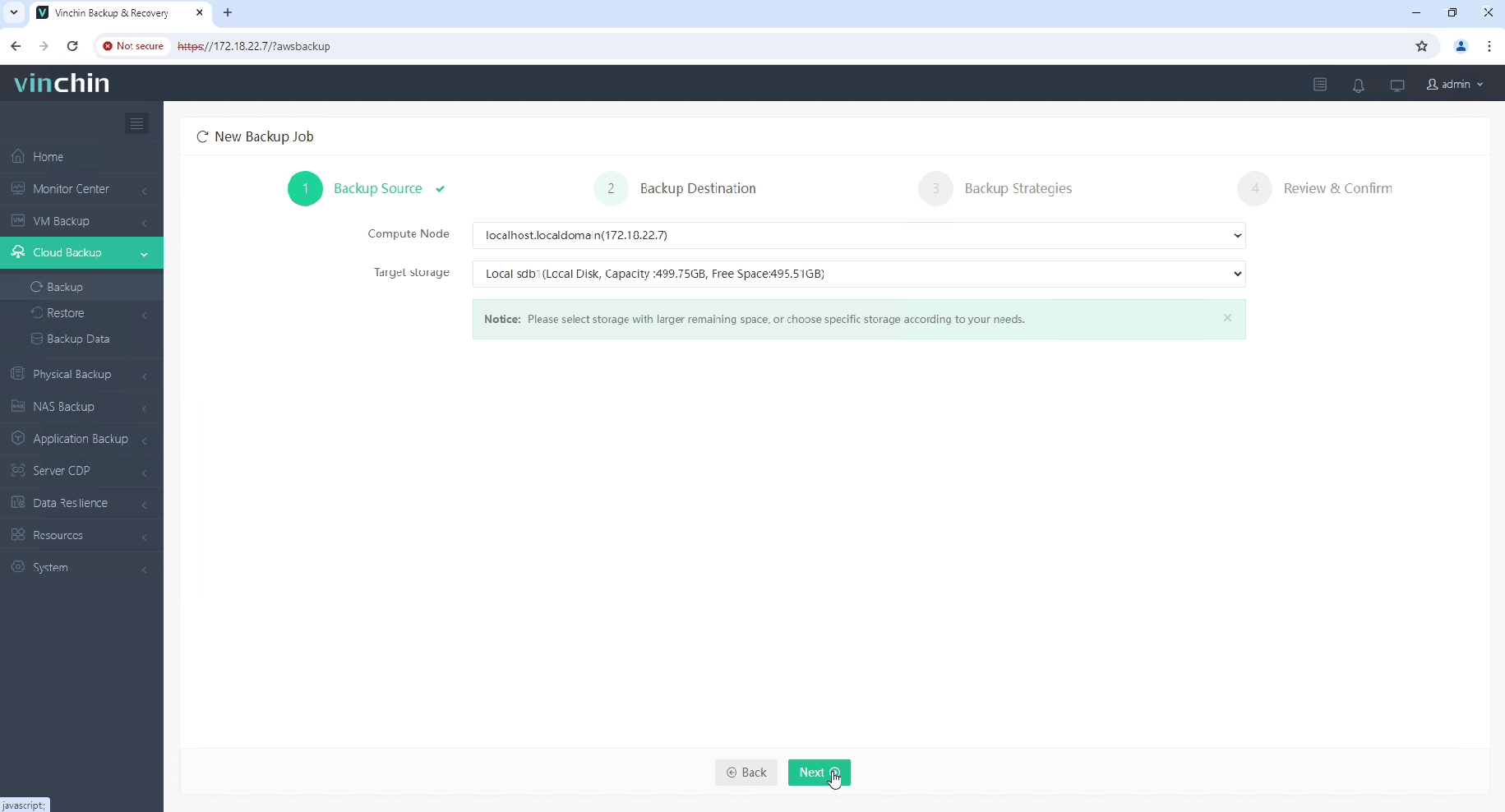
3. Select the backup strategies.
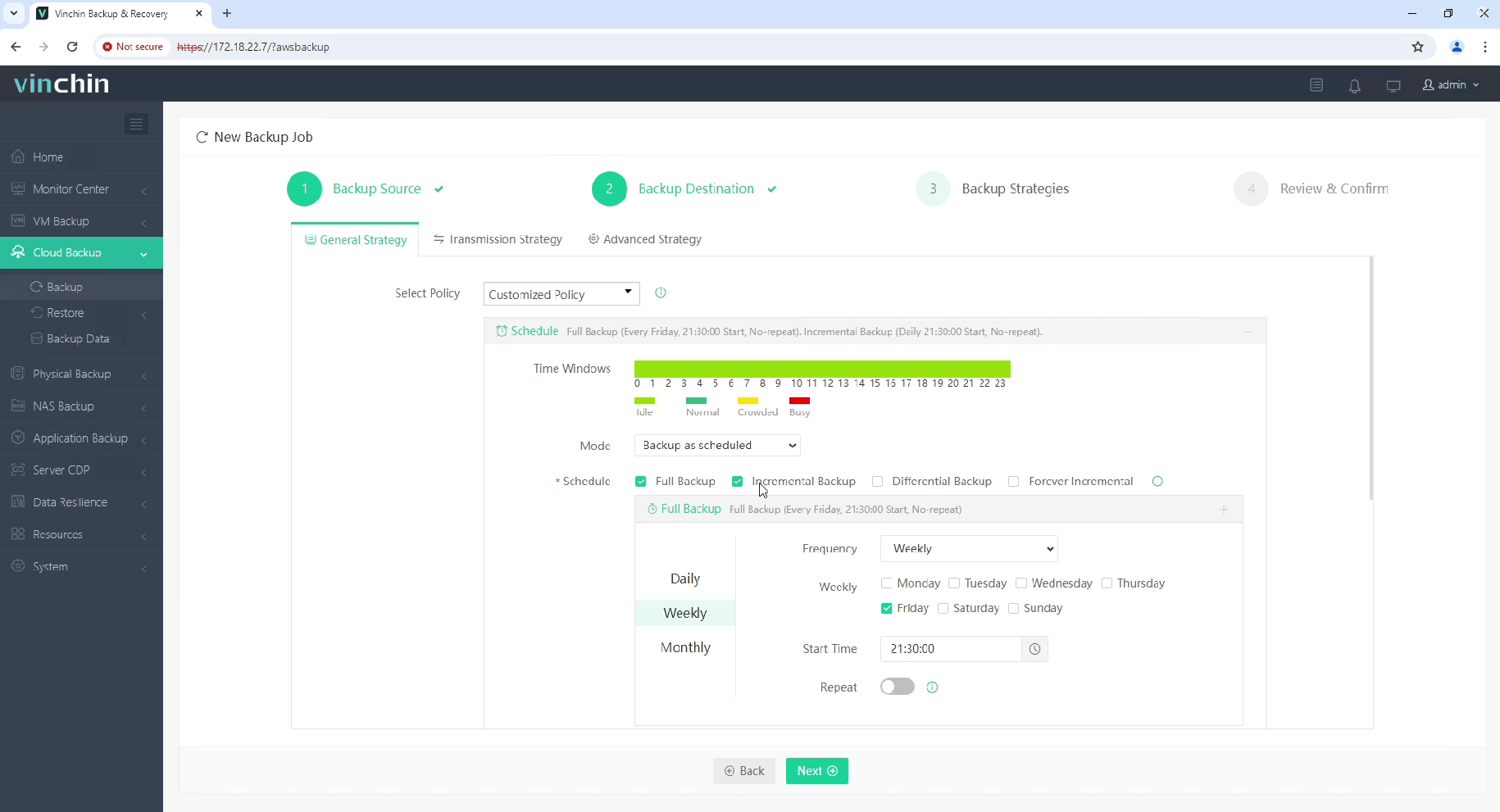
4. Review and submit the job.
Start your 60-day free trial of Vinchin Backup & Recovery to experience its secure, resource-efficient backup solutions. Or, contact us for a customized plan tailored to your IT needs.
AWS backup EC2 AMI FAQs
1. Q: What is the difference between an AMI and an EBS Snapshot?
A: An AMI is a template that contains all the information needed to launch an EC2 instance, including the OS, application server configurations, and data volumes. It’s essentially a starting point for a new instance. An EBS Snapshot, on the other hand, is a point-in-time backup of an EBS volume. When you create an AMI from an EC2 instance, AWS creates snapshots of the root volume and any other EBS volumes attached, and these snapshots form part of the AMI.
2. Q: How do I organize and tag my EC2 AMIs for better management?
A: AWS allows you to apply tags to your AMIs, which are key-value pairs that help categorize and organize your resources. You can assign tags during the AMI creation or add them later. Tags can include information like environment (e.g., Production, Staging), owner, backup date, or any other metadata that helps in managing and filtering your AMIs.
Conclusion
AWS EC2 AMI backups are a fundamental component of a robust data protection strategy. By the management of AMI backups, organizations can ensure quick recovery from disasters, maintain configuration consistency, and meet compliance requirements.
Share on:








